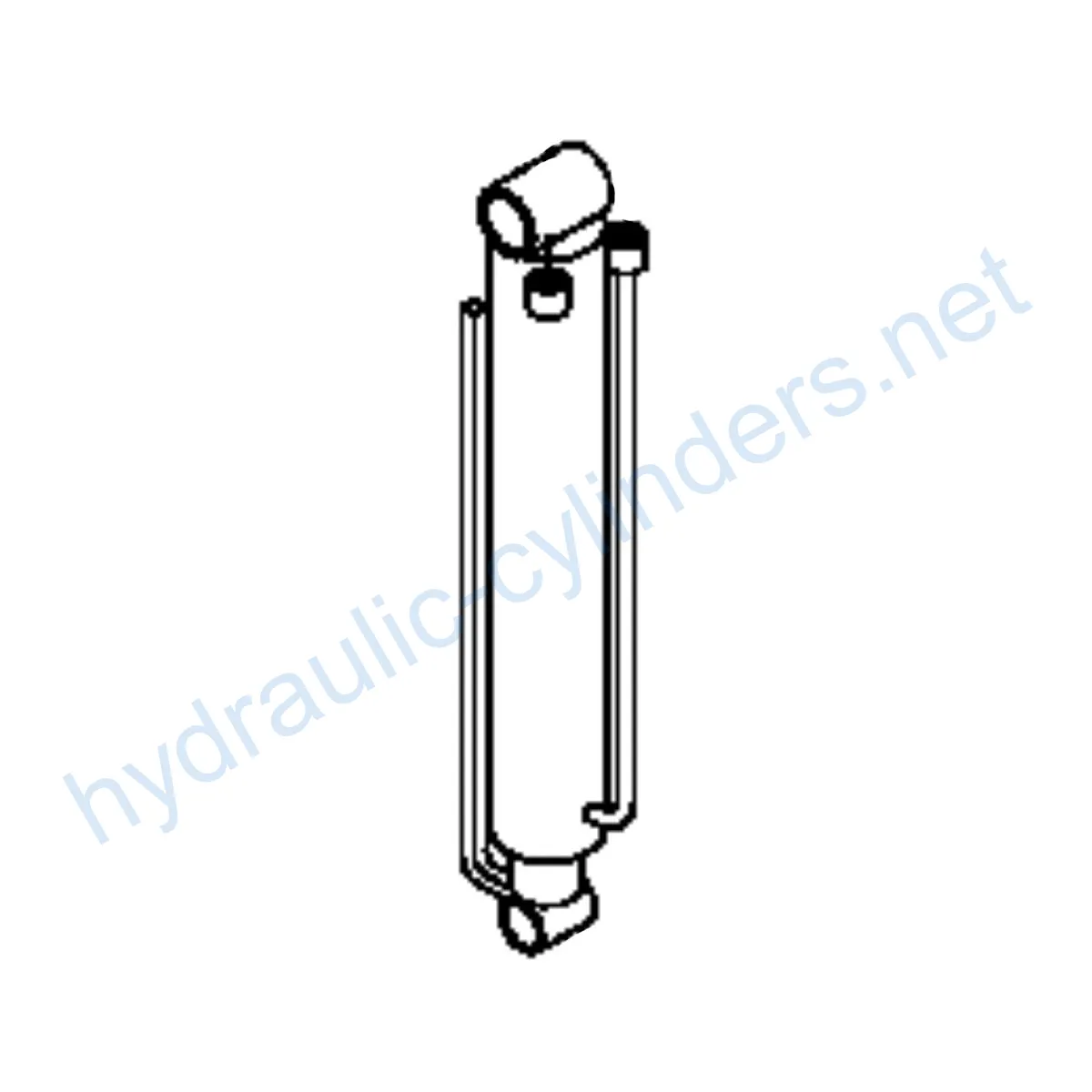Replacement Of KV17590 Hydraulic Depth Cylinder
Hidrolik silindir üreticilerinden, tedarikçilerinden ve mekanik ürünlerin ihracatçılarından biri olarak, hidrolik silindirler ve diğer birçok ürünü sunuyoruz.
Ayrıntılar için lütfen bizimle iletişime geçin.
Posta:sales@hydraulic-cylinders.net
Hidrolik silindir üreticisi tedarikçisi ihracatçısı.
Replacement Of KV17590 Hydraulic Depth Cylinder
Product Definition
The Replacement Of KV17590 Hydraulic Depth Cylinder is a hydraulic cylinder designed to replace the original cylinder in various models of equipment. It plays a crucial role in maintaining the proper functioning of the equipment.
Specifications and Models
Weight: 11.61 lb
Height: 2.6 in
Width: 3.8 in
Length: 23.8 in
Compatible Models:
- 36
- 48
- BA72
- BA84
- BP72
- BP84
- CA15
- LP72
- LP78
- LP84
- PA15
- PA15B
- PA30
- PA30B
- PR60
- PR72B
- PR72S
- PR84B
- PR96B
- RL66
- RL84
- RT55
- RT73
- TR36B
- TR48B
- TR60B
Product Features
- Improved Equipment Performance: Replacing damaged or worn hydraulic cylinders can restore the equipment’s normal operational capabilities, ensuring optimal performance in various applications.
- Enhanced Safety: Regularly replacing hydraulic cylinders reduces safety hazards caused by cylinder failures, ensuring the safety of operators and equipment.
- Overload Protection: New cylinder designs often incorporate better overload protection mechanisms, enhancing safety during operation.
- Quick Installation: Modern hydraulic cylinders are designed for easy installation and replacement, minimizing downtime.
- Standardized Components: Many hydraulic cylinders are standardized products, making it easier to obtain replacement parts in the market.
Applications
1. Excavators:
In excavators, the hydraulic cylinders in the boom or bucket may get damaged due to prolonged use or overload, requiring replacement to restore normal operation.
2. Cranes:
The hydraulic cylinders in crane boom arms are prone to wear and tear during frequent lifting and lowering, requiring regular replacement to ensure safety.
3. Tractors:
The hydraulic cylinders in front-end loaders of tractors may develop leaks or performance issues due to continuous lifting and tilting operations, necessitating replacement.
4. Harvesters:
During the harvesting process, the hydraulic system experiences high pressure, and cylinders may get damaged due to fatigue. Timely replacement is necessary to maintain efficiency.
5. Automated Production Lines:
Hydraulic cylinders are used to control robotic arms and other automated equipment. Cylinder failures can significantly impact production efficiency and should be replaced promptly.
6. Die Casting Machines:
In high-pressure and high-temperature environments, hydraulic cylinders in die casting machines may experience performance degradation. Regular replacement ensures product quality.
7. Mining Equipment:
Hydraulic cylinders are used for lifting and moving heavy loads in mining equipment. Due to harsh working conditions, regular inspection and replacement are necessary to avoid equipment failures.
8. Bulldozers:
On bulldozer blade arms, worn hydraulic cylinders can lead to a decline in pushing capacity. Timely replacement is essential to maintain operational efficiency.
Maintenance Tasks
Regular maintenance tasks for the Replacement Of KV17590 Hydraulic Depth Cylinder include:
- Periodic Inspections
- Proper Lubrication
- Seal Replacement
- Calibration Checks
Safety Considerations and Environmental Factors
When using the Replacement Of KV17590 Hydraulic Depth Cylinder, it is important to follow safety measures to prevent accidents. This includes using appropriate personal protective equipment and adhering to proper operating procedures. Environmental factors such as temperature and cleanliness should also be considered to ensure optimal performance.
Troubleshooting and Common Issues
Some common issues that may arise with the Replacement Of KV17590 Hydraulic Depth Cylinder include:
- Leakage
- Slow or Incomplete Operation
- Excessive Noise
- Irregular Movement
To address these issues, follow these troubleshooting tips:
- Check for loose connections and tighten if necessary.
- Inspect seals for wear or damage and replace if needed.
- Ensure proper lubrication of moving parts.
- If issues persist, consult the manufacturer or seek professional assistance.

Design Considerations and Selection Criteria
When selecting the Replacement Of KV17590 Hydraulic Depth Cylinder, several design considerations and selection criteria should be taken into account:
- Load-Bearing Capacity
- Sealing Performance
- Durability
- Safety Features
- Maintainability
Sealing and Lubrication
The Replacement Of KV17590 Hydraulic Depth Cylinder utilizes various sealing components, such as piston seals and rod seals, made from wear-resistant materials like polyurethane and nitrile rubber. The cylinder body and threaded end surfaces undergo fine processing to enhance wear resistance. Regular lubrication with the appropriate amount of hydraulic oil is necessary for proper functioning.
Regular Inspection and Preventive Maintenance
To ensure optimal performance and extend the lifespan of the Replacement Of KV17590 Hydraulic Depth Cylinder, the following preventive measures should be implemented:
- Proper installation, lubrication, and adjustment
- Provide guidance on aligning the cylinder correctly during installation
- Recommend the use of suitable mounting brackets to secure the cylinder
- Suggest inspection, repair, and replacement procedures
- Offer replacement parts and rebuilding services
- Provide tips to enhance the longevity of the cylinder
Product Installation Guide
Proper installation of the Replacement Of KV17590 Hydraulic Depth Cylinder is crucial for its optimal functioning. Follow these guidelines:
- Ensure the equipment is powered off and properly supported.
- Remove the old cylinder carefully, noting its orientation.
- Clean the mounting surfaces and apply a suitable sealant, if required.
- Align the new cylinder with the mounting holes and slowly thread in the bolts.
- Tighten the bolts gradually, alternating between them to ensure even pressure.
Take a Tour of Our VR Factory:
Take a tour of our VR factory with the following
Hydraulic Cylinder Application:


